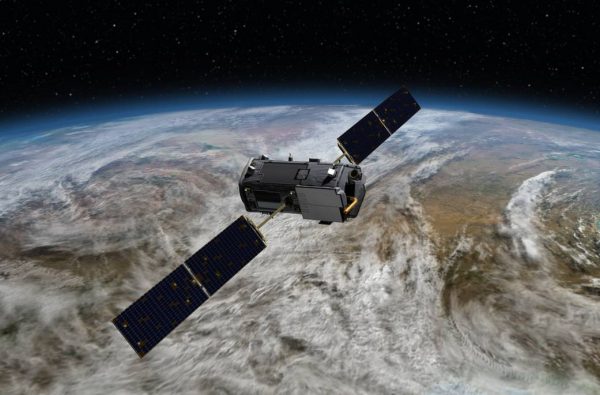
One of the many satellites tracking carbon dioxide levels. Courtesy of Nasa
By Preetam Shokar
Editor
When it comes to global warming, the terms greenhouse gases and fossil fuels are what first come to mind for most of us. Many people believe that they have no impact on a situation and it is up to the leaders of their respective countries to solve this problem. Those who don’t believe that global warming exists claim that the Earth will sort itself out, and it’s “just a phase”. This false belief is the reason global warming should not be taken lightly. If everyone took the initiative to reduce, reuse, and recycle, the trend would shift to help, not hurt, the Earth.
Every few years, the U.N. conducts a study called the “fifth assessment report”, which tracks greenhouse gases, sea levels, snow falls, droughts, and more. The report released vital, saddening news. Nations that utilize the most fossil fuels and create the most greenhouses gases have 12 years to make a full change to policies they have created, or suffer an irreversible path towards global disaster.
Carbon Offsets to Alleviate Poverty, also known as COTAP, is a private organization working towards reducing greenhouse gases in our atmosphere through an interpersonal approach. One of their goals is to empower individuals and organizations to address climate change through learned knowledge and information. They believe that there are three main categories for which people can reduce their carbon footprint: Driving, air travel, and home energy.
The first category seems like a simple one to address; just drive less. But in fact, there’s more to it. If possible, walking, riding a bike, carpooling, or public transit are cost-effective options and help save the planet, but if those types of transportation aren’t feasible, invest in a low- carbon or electric vehicle. Switching to these types of vehicles will save you money and help the environment, a true win-win.
Air travel may seem unavoidable when traveling long distances, so here are a few ways to help the environment while 20,000 leagues above the sea. Travel economy class when flying. Similar to carpooling or public transportation, carbon emissions will be reduced since the energy is spread among more people.
Home energy savings! Saving on the gas or electric bill can also help save the environment too. Insulating homes, making sure appliances are up to date and are energy efficient, turning off light bulbs, and adjusting the thermostat are a few ways that can make the difference in the bills and in the atmosphere.
These tips for saving the environment are just a few ways that you can do your part in making the stride towards reducing greenhouse gases, and your carbon footprint. If everyone does what is necessary, those who lead may see what we do, and follow suit before we head in an irreversible direction towards global calamity.

